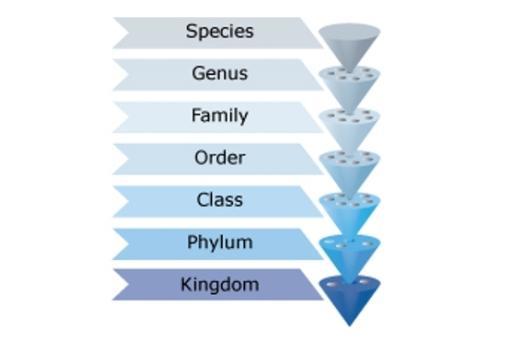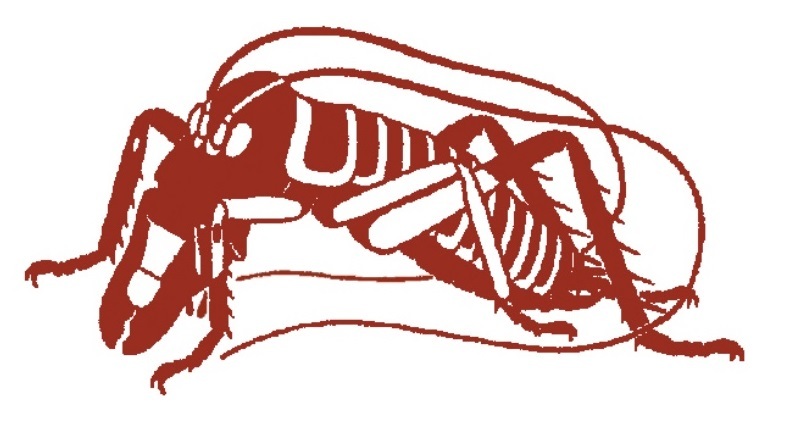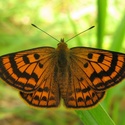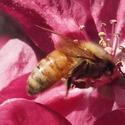One of New Zealand’s most well known insects is the wētā, of the Orthoptera order, but there are thousands of other insects species, some of which we know very little about.
What is an insect?
Insects are animals that have six legs, three body sections (a head, a thorax and an abdomen), antennae and a hard exoskeleton, like a skeleton on the outside of their body – they are invertebrates. Vertebrates like mammals have a skeleton on the inside of their body. Insects are the most diverse group of animals on the planet, meaning that they have the largest number of species.
Life cycle
Insects lay eggs, which hatch to produce a larva. These larvae shed their exoskeleton several times until they reach adulthood. Some insects change slightly between each moult and are called nymphs during the process, for example, cockroaches and water boatmen, while some undergo a massive change in their final moult, like butterflies, which have an extra pupa phase. An insect that is not an adult or not mature is broadly called a juvenile.
Learn more about the life cycle of scale insects – in this video, researcher Rosa Henderson describes the development of these tiny creatures.
Use this interactive to explore the monarch butterfly life cycle.
Taxonomy of insects
There are more than 20,000 species of insects found in New Zealand. They vary widely in shape and size, but most belong to only five groups or orders. Insects in an order can look very different, but they all share important similarities.
It is important to be able to identify different species of insects. With the large number of insect species in the world, it is critical to have a system for organising them. Taxonomy (from the Greek ‘taxon’ meaning arrangement) is the science responsible for this. Taxonomists are scientists concerned with organising living things into different groups and figuring out how those groups relate to one another. Classification involves grouping organisms into a series of hierarchical categories: kingdom, phylum, class, order, family, genus and species. These categories were first developed by Carl Linnaeus in the 18th century and have remained in common use ever since.
Organisms are sorted into nested groups based on evolutionary relationships and physical characteristics. Insects are animals and therefore fit into the larger grouping or kingdom called Animalia. They have segmented bodies and an exoskeleton, which makes them part of the phylum Arthropoda along with crustaceans. Insects are categorised under the class Insecta. There are 29 major insect orders but the five most diverse insect orders are:
- Coleoptera – beetles
- Hymenoptera – ants, wasps and bees
- Lepidoptera – butterflies and moths
- Diptera – flies
- Hemiptera – cicadas and ‘true bugs’
Coleoptera – beetles
Beetles are known as Coleoptera, from the Greek ‘koleos’ (sheath) + ‘pteron’ (wing). This refers to how their first pair of wings have hardened into an elytra that covers the second pair of wings (and usually the entire abdomen) as a protective case.
Hymenoptera – ants, wasps and bees
The Hymenoptera order includes ants, wasps and bees and is one of the most morphologically and ecologically diverse insect orders worldwide. Some of the members of this order are hugely important as pollinators, predators or pests. In this group, the front and hind wings are locked together by a tiny row of hooks (male and queen ants have wings). It is a little unclear why they’re called Hymenoptera, from the Greek ‘humen’ (membrane) + ‘pteron’ (wing).
New Zealand currently has only 40 confirmed species of ants, and of these, only 11 are endemic. Ants are generally geographically widespread and commonly found in forested habitats. The other 29 are introduced species accidentally transported to New Zealand by humans, mostly from Australia. Discover the fascinating story of the battle for food between introduced wasps and our native ants.
Whilst wasps often have a bad reputation, not all wasps are the bad guys. New Zealand has 2,500 species of native wasps, and they are classified as parasitoid wasps. New species are still being found. In 2013, Manaaki Whenua – Landcare Research discovered six new native wasp species, which help control pest caterpillars. Their new names were all inspired by Tolkien’s The Lord of the Rings.
New Zealand has 28 native species and 13 introduced species of bee. Honey bees (Apis mellifera) are important pollinators of many cultivated food crops and other flowering plants.
Lepidoptera – butterflies and moths
The Lepidoptera order includes moths and butterflies, and there are 2,000 native species in New Zealand. Moths are usually active during the night and are usually less colourful than butterflies, but there are exceptions. The Ahi Pepe MothNet project is working to raise the profile of moths with the public.
If you’ve ever caught a moth or butterfly in your hand, you might have found a light powder on your hands afterwards. These are the tiny scales that give the group its name, from the Greek ‘lepis’ (scale) + ‘pteron’ (wing).
Diptera – flies
We usually think of flies as pests, but they are hugely important for pollination and breaking down rotting material. Most insects have two pairs of wings, but in some cases, one pair will be modified to perform another function. In flies, their second pair of wings are reduced into something called halteres, which act as a balance and guiding system and is one of the reasons why it can be so hard to swat flies. Because of these halteres, flies have only two wings, which is what their order name Diptera is based on, from the Greek ‘di’ (two) + ‘pteron’ (wing).
Glow-worms and mosquitos are also members of the Diptera family.
Hemiptera – cicadas and true bugs
Hemiptera means half-wing and comes from the Greek ‘hemi’ (half) + ‘pteron’ (wing). This is because the first pair of wings is hardened at the base while part of the wing is thin and membranous. Entomologists refer to insects in this order as bugs, although the word can also be used to refer to insects in general. The members of this order can look very different, but all members have piercing mouthparts used to suck up fluids, usually from plants, but sometimes from inside other insects!
Cicadas are one of the noisiest and possibly best known New Zealand bug.
Related content
Explore What’s so special about insects?, Insects – physical characteristics and Aquatic insect life to find out more about insects.
Discover the wide range of our resources on insects, or explore the range of content under our invertebrates topic.
Find out more about the modern classification system and why taxonomy is important.
Download these posters from the New Zealand insect cards project:
In the Connected article City of bugs, students teamed up with a scientist to find out which ecosystem in their city had the most invertebrates.
Learn about bringing insects into your classroom in our PLD webinar All about insects featuring entomologists Dr Chrissie Painting and Tom Saunders.
The article Te aitanga pepeke provides an ao Māori perspective on the grouping/whakapapa of creatures with bent legs and the ability to jump.
Activity ideas
Your students can learn more about how the Linnaean classification system works with the activity Insect mihi. Students write a formal introduction for an insect species of their choice, including information about the insect’s relationship to other animals and also the land.
This activity shows you how to collect moths, and this activity tells you how to rear them to observe their life cycle.
In this activity, label a wētā and cicada using the online interactives or download a paper alternative.
Useful links
Visit our We love bugs! Pinterest board with links to resources and community activities.
Manaaki Whenua – Landcare Research has an online Freshwater invertebrates guide to assist community groups with monitoring freshwater invertebrates in New Zealand and What is this bug?, a handy guide to common invertebrates of New Zealand. There is also a range of pages providing general information under Invertebrate systematics (includes ants, beetles, weevils, stick insects and scale insects and more).
Visit the New Zealand Entomological Society website.
This Newsroom article describes 10 New Zealand insects from the 68 newly described insects of 2019.
Acknowledgement
Thank you to the New Zealand insect cards project for its support in the writing of this content.
This article has been developed using resources by Dr Leilani Walker and Dr Christina Painting and illustrations by Emma Scheltema. Original material developed with support from the New Zealand Entomological Society. Search the internet to find out where to buy a set of the Insects of New Zealand playing cards.
















